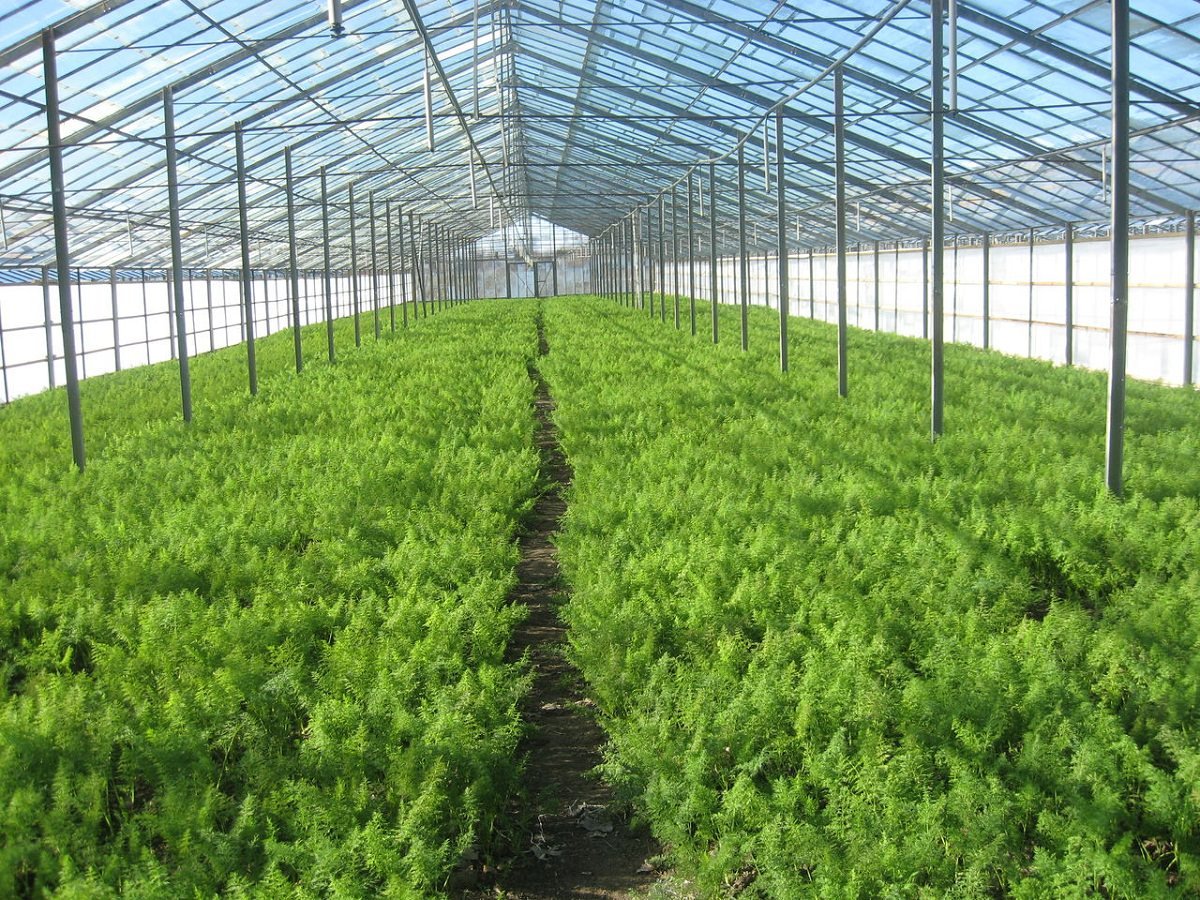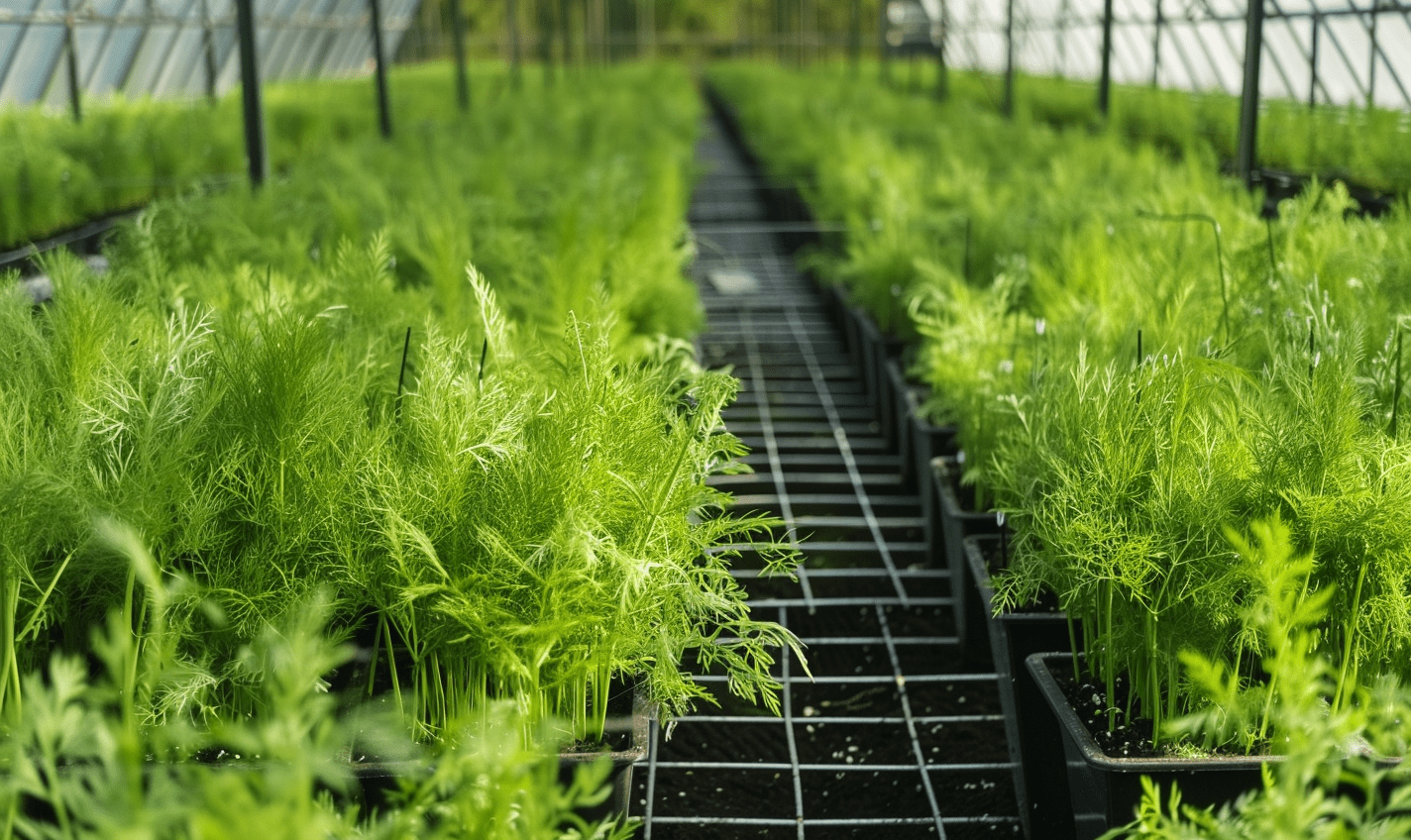How to Grow Dill in a Greenhouse: A Detailed Guide for Those Starting from Scratch

Have you ever wondered why dill from the store is so unsightly? Or maybe you tried to grow it at home, and in the end you only got thin stems that you can’t even put in a salad? But what if I told you that you can grow lush, aromatic dill right in your greenhouse, even if there is snow outside? Yes, it is possible, and I am going to tell you how to do it, step by step. This article is for those who have just picked up the seeds and do not know where to start. We will analyze everything: from choosing the time of planting to the intricacies of care. I promise that you will not get confused, but will want to start as soon as possible. Interested? Then go ahead, to your first harvest!
Why do you need dill in a greenhouse?
Tell me honestly: what inspired you? Do you want to surprise your family with fresh herbs in the middle of winter? Or are you tired of overpaying for wilted bunches in the store? Or maybe you just dream of your own corner of nature, where everything is under control? Believe me, you are not alone in these desires. Dill in open ground is a lottery: sometimes the sun beats down, sometimes it rains, sometimes aphids attack. In a greenhouse, you are the boss. But how to avoid failures and grow dill that will smell throughout the entire kitchen? Let's figure it out.
Why is a greenhouse great for dill?
Dill seems simple, but it loves comfort. In a greenhouse, you create an ideal world for it, where there are no sudden changes in weather. What does this give you?
- Greens all year round. Don't wait for summer - sow whenever you want.
- No whims of nature. Wind, frost or heat are no longer enemies.
- Everything is under your control. Temperature, light, watering - you decide.
- Tasty and profitable. Growing your own dill means savings and real flavor.
We know a lot about greenhouses. Their polycarbonate structures — this is warmth, light and reliability for any region of Ukraine, from Transcarpathia to Donbass.
Which dill to choose?

Dill is different, and these are not just words. Some varieties give a sea of greenery, others quickly turn into umbrellas. What to take for a greenhouse? Here are my recommendations:
- “Lesnogorodsky” – juicy greenery, blooms late, a godsend for beginners.
- “Salute” is a bushy, lush plant that pleases with its leaves for a long time.
- “Amazon” is productive, has a bright taste, and is resistant to greenhouse conditions.
Don't make the same mistake as beginners: don't grab the first packet of seeds you come across. Old or unsuitable varieties - and you'll get more disappointment than greenery. Look for seeds marked "for greenhouses" from reliable sellers.
When to plant dill in a greenhouse?
“When should I start?” you ask. There is no strict calendar in the greenhouse – everything depends on how you prepare it. Here are some guidelines:
- Early spring: February-March – for first harvest by April.
- Summer: June-July - if you like fresh dill for shashlik.
- Late autumn: October-November - to have a supply for the winter.
- Winter: from December - if there is heating and lamps.
Without heat and light in winter, dill will “fall asleep”. NovaTeplica greenhouses can easily be equipped with heaters - they are designed for any conditions, from Kyiv to Nikolaev.
How to prepare a greenhouse and soil?
Imagine: you sowed dill, you are waiting for shoots, but there are none. Why? Most likely, you missed the preparation. It's like baking a pie without a pan - the result will not please you.
Preparing the greenhouse
- Cleanliness first. In the fall or before planting, wipe the walls with soapy water or a chlorine solution (weak!). Fungi and mold will not go away.
- Air. Dill does not tolerate stagnation - adjust ventilation.
- Light: There is little sun in winter, so consider using lamps (daylight or special ones for plants).
Greenhouses from NovaTeplica have well-thought-out vents and a durable frame that can withstand even winter winds.
Preparing the ground
Dill needs lightness and nutrition. How to make:
- Mixture: garden soil, compost and sand (3:1:1). Or just loose loam.
- Nutrition: add rotted compost (4 kg/m²) and a spoonful of superphosphate (10 g/m²). Fresh manure? Forget it – dill hates it.
- Acidity: pH 6.5–7. Too acidic? Add a handful of ash.
Mistake: Throwing seeds into heavy soil. Dill won't survive there - the roots need air.
How to plant dill correctly?

Time to plant! Dill only grows from seeds, so be patient. Here are the instructions:
- Seeds. They are “stubborn” because of the oils. Soak them in warm water (45 °C) for a day, change the water every 6 hours, then dry until they are loose.
- Sowing. Furrows are 1–2 cm deep, with 15 cm between them. Sprinkle the seeds generously but evenly (1.5 g/m²).
- Water. Water the furrows from a watering can with a fine nozzle, fill with soil, do not tamp.
Expect seedlings in 12-15 days. If there are no sprouts, the seeds may be old or the soil may be too cold.
How to care for dill?
Planted? Now the main thing is not to spoil it. The care is not difficult, but without it the dill will turn into “straw”.
Temperature
- Before emergence: +20–22 °C.
- After: +16–19 °C. If above +23 °C, expect umbrellas instead of greenery.
NovaTeplica greenhouses with polycarbonate keep the heat stable - dill will be cozy.
Watering
- Water once every 5-7 days so that the soil is slightly damp. Too much and the roots will rot.
- Water only at the roots; do not wet the leaves.
Light
- Dill needs 12 hours of light per day. In winter, without illumination, it will stretch out into “spaghetti”.
Top dressing
- In good soil, dill grows on its own. If the soil is poor, 10 days after germination, give it some ammonium nitrate (5 g/m²).
Soil care
- Loosen the space between the rows and pull out the weeds. Dill needs space.
Mistake: Ignoring ventilation. Stuffy? Dill will get sick.
When to harvest dill?
The greens are ready in 35–45 days, when the stems stretch to 20 cm. Cut at the base, leaving 3 cm – this way the dill will give a second harvest. Want seeds? Wait 2–2.5 months.
What can go wrong and how to fix it?
- Not enough light. The dill is pale and long. Solution: turn on the lamps.
- Too dense. Plants wither. Solution: thin to 6–8 cm between bushes.
- It's hot. The greenery is getting coarser. Solution: open the windows more often.
- Swamp. Overwatering - and the dill rots. Solution: water less often.
Why choose NovaTeplica?

A greenhouse is your main ally. NovaTeplica offers models for every taste: from miniature 2x3 m to large 6x12 m. Polycarbonate with protection against fading, a reliable frame and delivery throughout Ukraine - from Sumy to Crimea (until 2014, of course). With such a greenhouse, dill will be comfortable.
Bottom line: your dill is on its way!
Growing dill in a greenhouse is not rocket science. Prepare a place, sow the seeds, give them warmth and light - and soon your table will be decorated with fresh greens. Do not be afraid to experiment: every mistake is a lesson. Start today, and in a month you will be bragging about your harvest. Any questions left? Ask in the comments - I will help you figure it out. Good luck and fragrant dill to you all year round!





